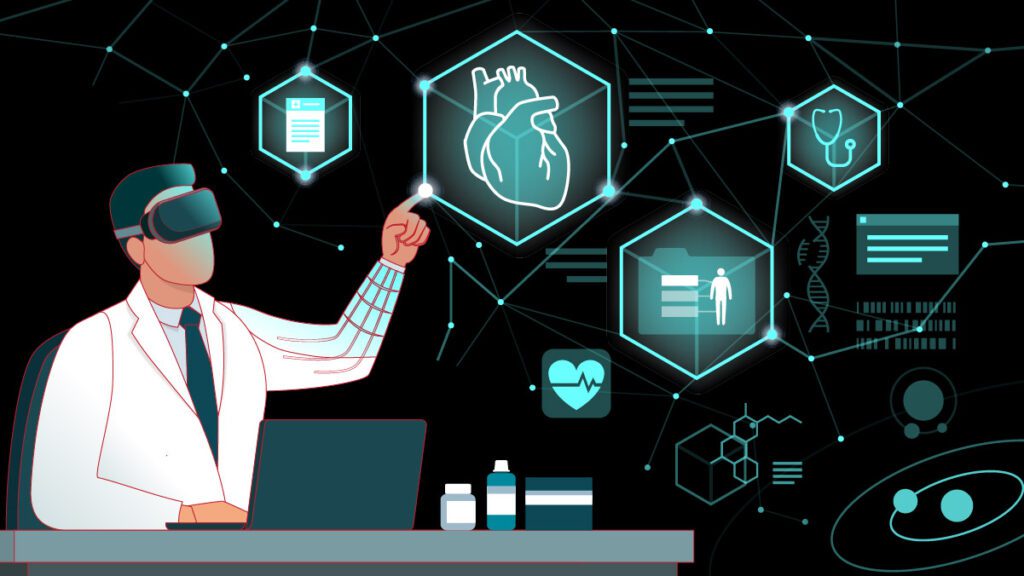What Are the Benefits of AI in Medical Diagnosis?

The use of Artificial Intelligence (AI) is expanding quickly in the medical field, particularly in the management of treatment and AI in medical diagnostics. There is a wide variety of research into how AI can assist clinical decisions and enhance physicians’ judgment.
Precise diagnosis is a vital part of global healthcare systems. For example, an estimate of 5 percent of outpatients receive an incorrect diagnosis in the U.S., with mistakes mainly associated with severe medical conditions and carrying the risk of serious patient harm.
During the past couple of years, AI and machine learning began as practical tools for assisting in diagnosis, resulting in the technology’s transform of healthcare by providing more precise diagnoses.
Helping with Medical Decision Making
The history of AI in medical diagnosis goes back to 1950, when it was first described. Meanwhile, many limitations in previous models contained widespread approval and application to medicine. In the early 2000s, many of these limitations were overcome by the rise of deep learning.
The use of AI in medical diagnosis helps with medical decision management, making, automation, admin, and workflows. It can also diagnose cancer, acute flag abnormalities, and critical triage findings in medical imaging, help radiologists, prioritize life-threatening cases, diagnose cardiac arrhythmias, predict stroke outcomes, and help manage chronic diseases.
AI-based tools in medical diagnosis are a valuable sphere of algorithms, data, analytics, neural networks, deep learning, and insights that are continually increasing and adapting to the needs of the patients and the healthcare industry.

In addition, AI is equal to human experts in medical diagnosis and presents significant potential to change medical care requirements while decreasing the extreme pressures felt by the medical industry.
Forty-two percent of physicians showed that AI in future medical diagnosis impacted certain specialties that are critical care, emergency medicine, family medicine, neurology, urology, and internal medicine. The leading cause? The administrative burden.
It is worth mentioning that tools have been deployed to support the efforts made by the medical community against Covid-19 using AI, policymakers, and society at large to manage the stages of the crisis and its aftermath.
Reducing the Big Load on Physicians
AI plays an important role, reducing the big load on physicians during their work through vast quantities of information and imaging. Still, it can be used to undertake a large percentage of the administrative burden.
By using computer tools, the data can be manipulated to convey better information and show how AI-driven innovation benefits companies , such as coloring an X-ray, issued by companies to make flesh and bone translucent and hyperreal.
On the same note, proper solutions developed for the healthcare sector are used to deliver medical practitioners with necessary support as they handle increasing volumes of information, data, and imaging.
A study by the Journal of the National Cancer Institute revealed AI breast cancer detection accuracy of 95 percent. Other studies indicated that AI can be as good as trained doctors when detecting eye diseases.
In addition, a 2019 study published in The Lancet showed that AI capabilities are at least equal to that of humans when analyzing medical images such as X-Rays, MRIs and CT scans.
AI in medical diagnosis is a vital tool for facilitating physician burnout, but equally for supplying the radiology professional with support in managing workloads that are increasing.
Radiologists have to deal with rising imaging and multiple volumes, and they’re expected to do so at formerly unheard-of speeds.
AI and deep learning solutions provide radiologists with necessary support while handling these weighty imaging volumes, allowing them to streamline workflows, save time, increase capacity and increase diagnosis reliability.
The U.S. Food and Drug Administration (FDA) recently granted Breakthrough Device Designation to Ibex Medical Analytics, a specialist in AI-powered cancer diagnostics, which will help fast-track its platform’s clinical review and regulatory approval.
Summary
AI in medical diagnosis is still on the edge of its highest potential, with high possibility for growth as the technology exists to enhance and support the medical profession and is already being integrated into practice and workflows. As long as it is changing and evolving, it will adapt and step up to give the medical profession a reliable set of tools that can aid in diagnosis, workflow, and admin workload.
Inside Telecom provides you with an extensive list of content covering all aspects of the technology industry. Keep an eye on our artificial intelligence news section to stay informed and updated with our daily articles.
